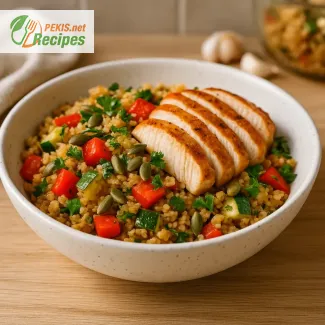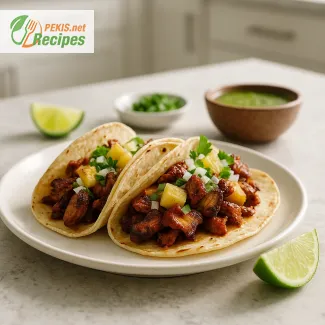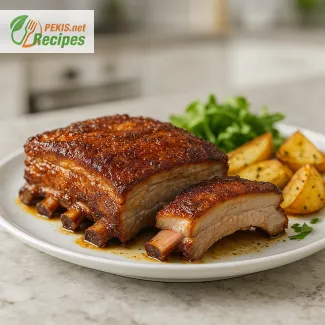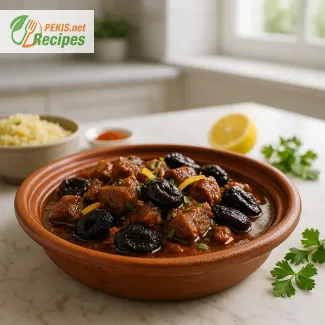
Wholesome weeknight meal with cauliflower rice and keto flavors
A nutritious, satisfying dish for low-carb lifestyles
When it comes to preparing a satisfying and easy low-carb dinner, few dishes offer as much versatility and flavor as a well-crafted keto cauliflower rice bowl. This modern classic has become a staple in low-carb meal prep and ketogenic diets, thanks to its light texture, impressive adaptability, and ability to absorb bold seasonings without overpowering the dish. Whether you're new to cauliflower rice recipes or a seasoned keto cook, this bowl is a perfect choice for busy evenings or planned weekly menus.
The foundation of this dish is cauliflower rice—a smart substitute for traditional grains that's made by finely grating or processing fresh cauliflower. The result is a fluffy, rice-like texture that’s ideal for low-carb dinners. Unlike traditional rice, which is high in starch, cauliflower provides a naturally light and nutrient-dense alternative that’s suitable for ketogenic, paleo, and gluten-free diets.
One of the reasons this bowl has surged in popularity is its customizability. Whether you prefer grilled chicken, spicy shrimp, marinated tofu, or a simple fried egg on top, the base of cauliflower rice works beautifully with a wide range of protein sources. Combined with sautéed vegetables, zesty sauces, and crunchy toppings like seeds or chopped nuts, it transforms into a complete, nourishing meal.
This keto bowl recipe is particularly useful for meal prepping. Cauliflower rice can be made in advance and stored in the refrigerator or freezer, making it easy to assemble quick meals throughout the week. It reheats well and maintains its texture, especially when lightly pan-fried or roasted instead of steamed. This method adds a bit of caramelization and enhances its slightly nutty flavor.
Incorporating this dish into your routine helps reduce your dependency on refined carbs while still enjoying a fulfilling and hearty dinner. It also supports blood sugar balance and fits perfectly into plans that emphasize low-glycemic foods. Since many people look for healthy dinner ideas that are quick and delicious, this bowl ticks all the boxes: minimal prep, high flavor, and endless variation possibilities.
Why cauliflower rice is the star of keto bowls
A low-carb hero with surprising texture
Cauliflower rice isn't just a filler—it adds real character to the dish. Its light, fluffy texture and mild taste make it an excellent carrier for robust seasonings like garlic, cumin, smoked paprika, and chili flakes. It absorbs the flavor of sauces and herbs, acting like a sponge for deliciousness. Additionally, it provides a satisfying base that doesn’t leave you feeling heavy after eating—a frequent concern with rice or pasta dishes.
Suitable for multiple diets
Aside from being keto-friendly, cauliflower rice is naturally gluten-free, dairy-free, and vegan. That makes it one of the few ingredients that work across nearly all dietary preferences. Whether you're serving picky eaters, trying to stay within your macros, or catering to food intolerances, this cauliflower bowl can be tailored to meet almost any need.
The perfect meal for busy weeknights
What sets this recipe apart from other low-carb meals is how simple and quick it is to prepare. You can use store-bought cauliflower rice for convenience or make your own in minutes using a food processor. Most versions of this bowl come together in under 30 minutes, making it an ideal option when you're short on time but still want a homemade meal that supports your health goals.
Creative variations for every preference
One of the biggest strengths of the keto cauliflower rice bowl is how adaptable it is. You can go with Asian-inspired flavors like sesame oil, soy sauce alternatives, green onions, and grilled chicken. Or choose Mediterranean ingredients like olives, cherry tomatoes, feta cheese, and tzatziki. You might also try a Tex-Mex variation, using avocado, lime, cilantro, and spiced ground beef or turkey. The combinations are nearly endless.
Add crunch with roasted almonds, cashews, or pumpkin seeds. Finish with fresh herbs like parsley or basil for brightness. You can even drizzle on a tahini sauce or a light garlic dressing to tie everything together. For those following a strict ketogenic plan, keeping an eye on ingredients like carrots, corn, or starchy vegetables helps ensure it remains truly low-carb.
A go-to dish for sustainable eating
Another benefit of this recipe is its sustainability. Cauliflower is widely available year-round, and using it in place of rice or pasta helps reduce reliance on processed ingredients. It's a budget-friendly option that supports both health and mindful consumption. Whether you're cooking for one or feeding a family, this bowl offers balanced nutrition without sacrificing flavor.
The ingredients are accessible and often already in your kitchen, making it a practical choice when you’re short on groceries but still want to stick to a healthy eating plan. The bowl can be scaled up or down easily, and leftovers reheat beautifully for lunch the next day.
With its vibrant flavors, nourishing ingredients, and low-carb foundation, the keto cauliflower rice bowl continues to be a top choice for those looking for delicious and nutritious dinner ideas that align with their wellness goals.
- Prepare the cauliflower rice: Wash and dry the cauliflower. Cut into florets and pulse in a food processor until it resembles rice-sized grains. Alternatively, use pre-riced cauliflower.
- Sauté the vegetables: Heat olive oil in a large skillet over medium heat. Add chopped onion and cook for 2–3 minutes until translucent. Add minced garlic, diced red bell pepper, and zucchini. Cook for another 5 minutes, stirring occasionally.
- Add spices and cauliflower rice: Stir in ground cumin, smoked paprika, salt, and black pepper. Add the cauliflower rice and cook for 5–7 minutes, stirring often, until it becomes tender and lightly golden.
- Grill the chicken: While the vegetables cook, grill or pan-sear chicken breast until golden and cooked through (internal temperature 75 °C / 165 °F). Let rest, then slice into strips.
- Assemble the bowls: Divide the cauliflower rice mixture into 4 bowls. Top each with sliced grilled chicken, sprinkle with pumpkin seeds, drizzle with lemon juice, and garnish with chopped fresh parsley.
Enhance Your Cauliflower Rice Bowl with Smart Ingredient Swaps
Transform your keto meal into a flavorful, nutrient-rich experience
Perfecting a keto cauliflower rice bowl means more than simply following a recipe. The beauty of this dish lies in its versatility, and small changes can significantly improve the taste, texture, and nutritional value. Whether you're aiming to intensify the flavor, increase the protein content, or elevate the presentation, thoughtful adjustments can make a noticeable difference.
Boosting flavor without increasing carbs
One of the easiest ways to enhance this meal is by incorporating aromatic base layers. While garlic and onion are standard, you can deepen the flavor by starting your pan with leeks, shallots, or fennel. These ingredients bring natural sweetness and umami without adding many carbohydrates. If you want to amplify the dish's smokiness, adding a pinch of chipotle powder or smoked sea salt complements the cauliflower beautifully and pairs well with grilled meats.
Herbs can also change the personality of your bowl. For a Mediterranean twist, add fresh oregano, thyme, or a dollop of tapenade. If you prefer an Asian-inspired variation, try toasted sesame oil in place of olive oil and finish with a splash of tamari or coconut aminos, which provides a gluten-free umami punch.
Adding richness with healthy fats
Cauliflower rice is naturally low in fat, making it an ideal base for adding good fats that enrich both flavor and satiety. A soft-boiled egg, added just before serving, introduces creaminess and depth. Alternatively, sliced avocado, a spoonful of cashew cream, or a tahini drizzle can transform the mouthfeel of the dish while supporting ketogenic macros.
If you're craving a dairy element, a small amount of crumbled feta or goat cheese can elevate the overall taste profile without compromising the low-carb integrity of the meal. These additions also contribute calcium and protein, offering both culinary and nutritional benefits.
Making it more filling with alternative proteins
While grilled chicken is a lean and classic topping, this recipe adapts well to other protein-rich choices. Salmon adds omega-3 fatty acids and a buttery texture that pairs well with roasted vegetables. Tempeh or tofu, when pan-seared and seasoned properly, make the dish completely plant-based without sacrificing protein content.
For a richer texture, try slow-cooked shredded beef or lamb, especially if you're aiming for a warming, comforting version. Just be sure to balance strong meats with lighter, acidic toppings like pickled onions or a squeeze of fresh lemon juice.
Why homemade is better than pre-packed
Choosing to prepare this bowl at home allows you to control sodium levels, ingredient freshness, and fat quality. Many pre-packaged cauliflower rice mixes contain preservatives or additives that affect both taste and health value. Homemade preparation ensures that you get the best texture and flavor, especially if you lightly roast the rice instead of steaming it.
Pre-chopped vegetables may be convenient, but freshly diced peppers and zucchini provide crisper texture and brighter flavor. Cooking your protein from scratch also avoids excess sodium and ensures the perfect doneness for your taste preferences.
Common mistakes to avoid
Many people accidentally overcook cauliflower rice, turning it soggy and bland. To maintain a pleasant bite and avoid a mushy texture, always cook it on medium-high heat for a short time and avoid overcrowding the pan. Let moisture evaporate fully to concentrate the flavor.
Another common misstep is under-seasoning. Since cauliflower has a mild flavor, don’t be afraid to add bold spices. Without enough seasoning, the dish can fall flat, even with great toppings.
Overusing oily sauces can also ruin the bowl’s balance. Instead, opt for emulsified dressings like vinaigrettes or yogurt-based sauces that add tang without overpowering the ingredients.
Healthier alternatives and enhancements
For a fiber-rich version, consider adding a small handful of shredded cabbage, broccoli stems, or kale to the cauliflower rice while it cooks. These vegetables add crunch and increase nutrient density.
If you want more plant-based protein, mix in chickpeas (sparingly for keto) or edamame. A sprinkle of hemp seeds or chia seeds not only adds texture but boosts omega-3 intake and supports digestion.
For spice lovers, homemade harissa, chili oil, or a spoon of sambal oelek can liven up the bowl and stimulate appetite without added sugars. On the other hand, a cooling mint-yogurt sauce works wonders if you're balancing heat from grilled spices.
Elevating texture and contrast
The best bowls balance soft, crisp, creamy, and crunchy. While cauliflower rice and chicken are typically soft, adding roasted nuts, seed mixes, or even lightly fried halloumi cubes can create an exciting contrast. For added crunch, consider quick-pickled vegetables like cucumbers or radishes, which introduce acidity and freshness.
Even visually, adding colorful garnishes like pomegranate seeds, thinly sliced chili, or microgreens helps increase appetite appeal and makes the dish feel elevated.
By exploring these variations and techniques, you can turn a simple keto cauliflower rice bowl into a dynamic, personalized culinary experience that caters to your health goals and flavor preferences.
Allergens present in the recipe
- None of the common top allergens are inherently present.
- Gluten: Not present if all ingredients are certified gluten-free.
- Cross-contamination risk: Possible in pre-packaged cauliflower rice or spice mixes.
Allergen substitution tips
- If allergic to seeds, omit pumpkin seeds or substitute with chopped cucumber or crushed nuts (if tolerated).
- For a vegetarian option, replace chicken with grilled tofu or tempeh.
Vitamins and minerals per serving (approximate)
- Vitamin C: 90 mg – Supports immune function and skin health
- Vitamin A: 1100 IU – Promotes vision and immune health
- Vitamin K: 70 µg – Supports bone metabolism and blood clotting
- Potassium: 900 mg – Helps regulate blood pressure
- Magnesium: 55 mg – Important for nerve and muscle function
- Iron: 2.2 mg – Supports oxygen transport in the blood
- Calcium: 65 mg – Helps maintain strong bones and teeth
Antioxidants per serving (approximate)
- Beta-carotene: 1.5 mg – Converted to vitamin A, supports cell repair and vision
- Lutein + Zeaxanthin: 0.6 mg – Beneficial for eye health
- Sulforaphane (from cauliflower): 4–8 µmol – Supports detoxification and may reduce inflammation
- Flavonoids (from parsley and red pepper): 20–30 mg – Contribute to anti-inflammatory and cardioprotective effects





